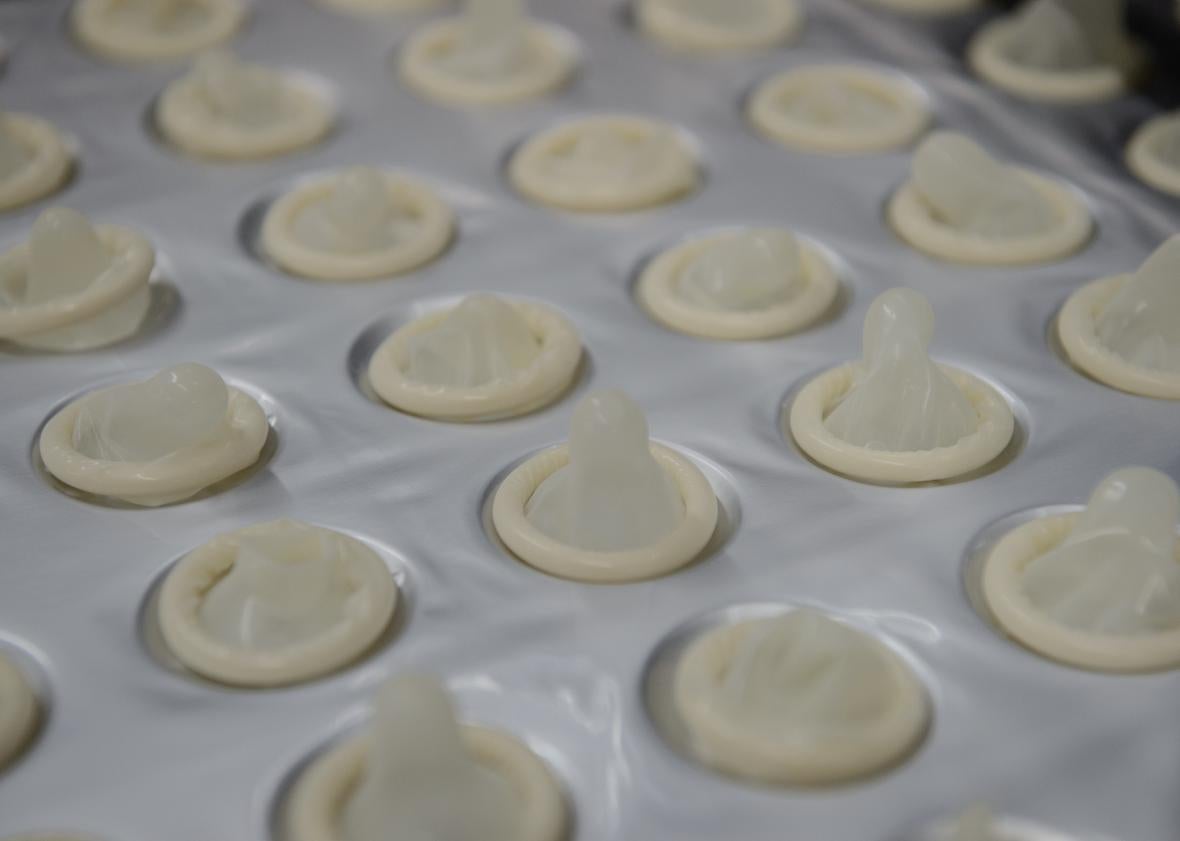Are IUDs and other long-acting reversible contraceptives (LARCs)—which happen to be the most effective forms of birth control and the best tools for reducing teen pregnancy—having the unintended consequence of decreasing condom use in young people? A study published this week in the journal JAMA Pediatrics suggests that teens need more counseling about sexually transmitted infections and diseases to ensure that they understand how to protect themselves.
STAT summarizes the authors’ findings:
The study looked at information provided by 2,288 high school girls who were sexually active. About 2 percent used LARCs, 22 percent used oral contraceptives, and 41 percent used condoms, with the rest choosing other birth control methods or no contraception at all. The study found that high school girls using LARCs were 60 percent less likely to also be using a condom during sex than the girls who were taking oral contraceptives. They were also more likely to have reported two or more recent sexual partners, which increases their risk for STDs and STIs.
These numbers raise some questions: Although the teens using LARC had had more sexual partners, were those casual encounters, or monogamous relationships? If the latter, it’s possible that losing the condoms was a reasonable decision rather than a risky one. Then again, could there be misinformation at work here? Could some providers have failed to communicate that IUDs and implants don’t protect against STIs? Without more information, we can’t yet say how long-acting birth control and condom usage do or don’t connect.
The study does underscore the importance of investigating whether condom use could drop as LARC use rises—and it’s not the first to suggest that teens aren’t being sufficiently taught the importance of protecting themselves from both pregnancy and possible infection. In this area of public health, two major imperatives may be at odds. On the one hand, unintended pregnancy can drastically reorganize a young person’s life and determine her future, and IUDs and hormonal implants are more than 99 percent effective at preventing it. (Typical use of the pill, by comparison, results in roughly a nine percent failure rate). When Colorado made long-acting contraceptives free and available to all teenagers and young women, the teen birth rate dropped 40 percent. (Colorado’s program came to a halt last summer when state Republicans refused to keep funding it.)
At the same time, STIs are a real, and seemingly worsening, problem, especially for the youngest sexually active Americans. As Amanda Marcotte reported in Slate last year, teens are having less sex than at any point since the 1980s. Unfortunately, that hasn’t stopped the gradual rise in STI rates. This past November, the Centers for Disease Control and Prevention released an analysis showing that the rates of chlamydia, gonorrhea, and syphilis (the three most common STIs that are notifiable, meaning that new cases are reported to the CDC) have increased for the first time since 2006. Teens and young adults—particularly young women—and men who have sex with men were shown to be at the highest risk.
“The 2014 data…show that youth are still at the highest risk of acquiring an STD, especially chlamydia and gonorrhea,” the CDC said. “Despite being a relatively small portion of the sexually active population, young people between the ages of 15 and 24 accounted for the highest rates of chlamydia and gonorrhea in 2014 and almost two thirds of all reported cases. Additionally, previous estimates suggest that young people in this age group acquire half of the estimated 20 million new STDs diagnosed each year.”
The CDC reiterated the importance of frequent STI testing: Sexually active women under 25 should be tested annually for gonorrhea and chlamydia; gay and bisexual men should be tested at least once a year, and perhaps more like every 3-to-6-months, for gonorrhea, chlamydia, syphilis, and HIV. In a 2014 overview of adolescent sexual health, the Kaiser Family Foundation cited research suggesting that many teens do get tested with some regularity: 37 percent of young men and 70 percent of young women ages 15 to 24 reported having had an STI test in the past year. But the foundation also questioned the accuracy of those numbers; in its own survey, it found that 56 percent of young women who reported having an STI test “incorrectly assumed it was a routine part of the exam, which is often not the case.”
Perhaps most tellingly, Kaiser’s survey found that health providers are falling woefully short when it comes to STI counseling. Only one-third of teen girls, and 45 percent of 19-to-25-year-old women, had talked to a doctor about STIs in the past three years. That, more than anything, needs to change if teens are to be protected from the competing risks that come with sex. Whatever the truth behind this week’s study, there’s no reason that effective birth control and crucial STI prevention should be viewed as mutually exclusive.
